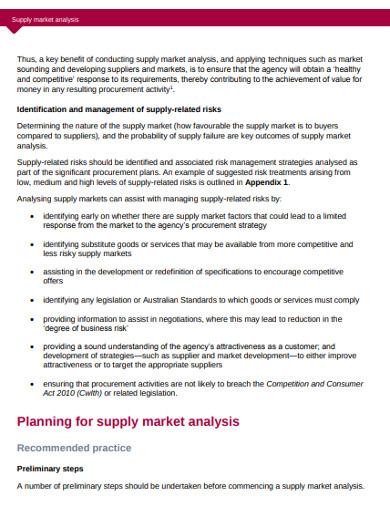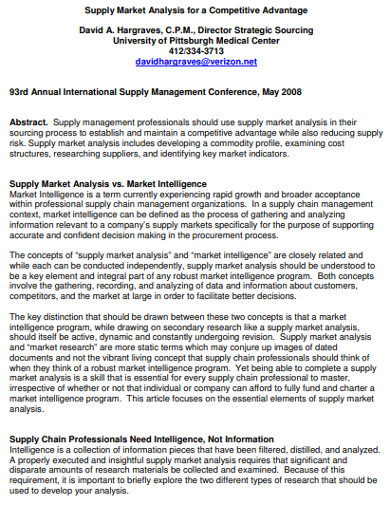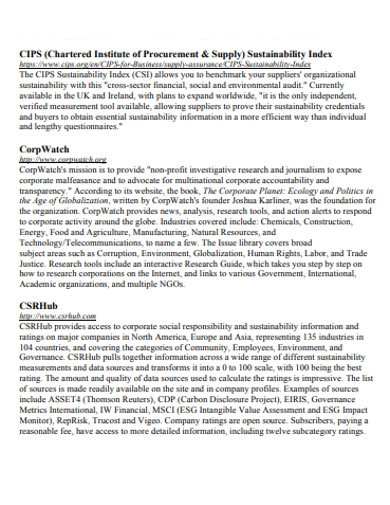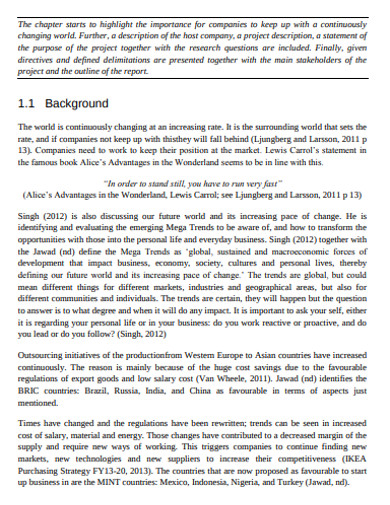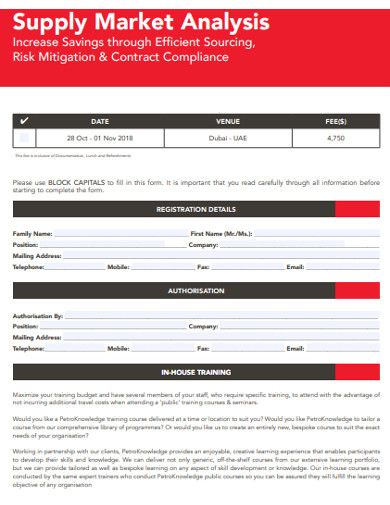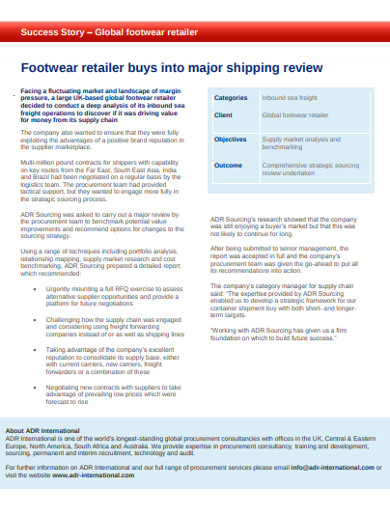7+ Supply Market Analysis Examples to Download
The Coca-Cola company’s global market share in the US is 43.3 percent, while Pepsico company’s stock is 24.9 percent, and Keurig Pepper company has a 17.9 percent share in the same country. The question is, what is a global market share? A global market share measures the presence of a company in a worldwide industry. This measurement depends largely on macroeconomic fluctuations, which makes it an indicator of a company’s competitiveness. Also, its presence indicates the effectiveness of a supply market analysis, which is our topic of the day.
What is the Supply Market Analysis?
As a supplier, you will need to gather data, facts, observations, and trends about the marketplace where you will carry out business. This process is called supply market analysis. As mentioned earlier, a practical supply market analysis should begin with a summary of the global market to evaluate the major opponents of the market. To reduce the significant risks and to make the right sourcing choices, you have to extensively research the industry that you are going to do business with and the existing suppliers of the industry. It is also crucial to remember that you cannot easily automate this type of analysis. Thus, it would be best if you exert the effort to ensure its success.
Michael Porter’s ‘Five Forces Model of Competition’
This model is the most common model that you can use for your supply market analysis. Through this model, you can determine and analyze the five competitive forces that form every industry and identify its weaknesses and strengths. This model can help you get a better understanding of the competition level of the industry sector and increase your company’s capacity to make a profit. Porter’s five forces include industry competition, Industry newcomers’ potential, power of suppliers, power of customers, and substitute product threat.
6+ Supply Market Analysis Examples
Take a look at the examples of supply market analysis that we have prepared for you. You can download these documents in a format mentioned right next to each of the items.
1. Sample Supply Market Analysis Example
2. Supply Market Analysis for a Competitive Advantage Example
3. Basic Supply Market Analysis Example
4. Supply Market Business Analysis Example
5. Formal Supply Market Analysis Example
6. Supply Market Analysis Management Example
7. Supply Market Analysis and Benchmarking Example
8. Supply Marketing Analysis in DOC
How to Conduct a Supply Market Analysis?
To ensure that the supply market analysis that you are going to conduct is successful, you can use the following instructions as your guide.
I. Master Your Product
Before doing anything else, know the product that you are going to study. If it is a service business, you can observe the services that you are going to examine. Understand it by knowing its uses and category. If you are studying a client’s product, interview the supplier. You can do it via a phone interview or in-person. You can also do a site visit and observe the products that they are offering. In addition, you may talk to its consumers or talk to their subject matter experts to get in-depth knowledge about the product.
II. Establish an Overview
Understand the vastness and framework or matrix of the product or service’s global market. You may start by getting information from published articles. You can find government published items online, which you can use for your study. Aside from that, you may use non-government published data. Through these sources, you can determine the classifications of the industry and get more information about the standard cost structure that the industry uses. You can also identify the significant businesses in the industry, its size, its importance, and other necessary information.
III. Evaluate Current Market
Get a better understanding of your competitors. These companies should be the most prominent players in the industry. The first thing that you should know is their financial status. You can do it by looking at their financial statements and sales reports. You will, then, analyze their market and their patrons. Other essential data that you can inspect are their strengths, weaknesses, opportunities, and threats(SWOT). Keep it in mind, though, that you need to do a separate evaluation for each of the competitors.
IV. Survey the Trends
Make your analysis successful by broadening your study. Examine the price changes and drivers of the product. Do in-depth research about the supply and product demand movements. Are you familiar with the Producer Price Index or PPI? You can include this article in your analyzation for a broader knowledge about the price history of the product. With this information, you will conduct comparative research for these significant players in the market and prepare an industry market analysis report. You will use this report to identify the best strategy for the procurement option.
Supply market analysis is one of the prerequisites in conducting business. This process will give you a light on the business path that you are going to take, which makes it a crucial step. Specifically, through this analysis, you can gain a competitive advantage over your competitors even though you are just a newbie in the industry. It will also support the feasibility study that you will conduct concerning the supply market that you are studying.



